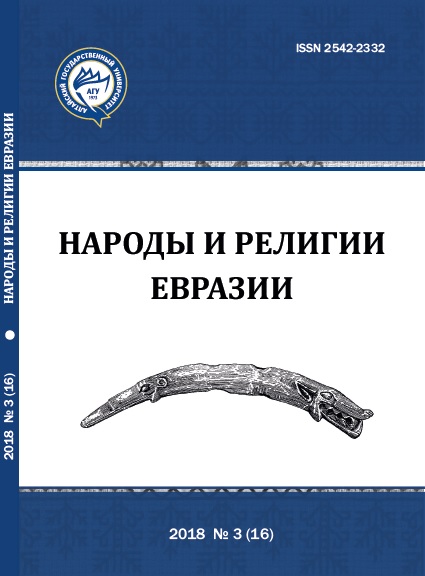The formation of the Red army of the Steppe krai and Turkestan national units during the civil war (1918–1922)
Main Article Content
Abstract
On the basis of legislative sources and records management, the article analyzes the process of formation of the national military units of the Red Army among the indigenous peoples of the Steppe Krai and Turkestan during the Civil War of1918-1922. It was revealed that during the period of the liquidation of the Soviet regime in most of the region's territory in 1918, the Bolsheviks didn't achieve certain successes in this matter. The positive dynamics of the process appeared in the first half of 1919, because of success of the Red Army on the Eastern and Turkestan fronts. The large-scale political and propaganda work of the Communist Party of Turkestan among the Muslim population was no less important factor in the successful mobilization of the Muslim population in the ranks of the Red Army. At the same time, the Bolsheviks followed the path of creating military units on an ethnic, rather than confessional basis. This tactic was built in the general logic of the process of nation-building in the region. It consulted interests of ethnic groups convinced that the presence of military units representing their ethnic group is a symbol of national identity and a pledge of preserving state and cultural independence.
Downloads
Metrics
Article Details
References
Акбоева З. Роль мусульманского Бюро РКП(б) в деле защиты интересов местного населения Туркестанского края // Karadeniz. 2015. № 27. С. 57-73.
Безугольный А. Ю. Призывное законодательство и комплектование рабоче-крестьянской Красной армии представителями нерусских национальностей в 1920-е гг. // Вестник Калмыцкого института гуманитарных исследований РАН. 2013. № 3. С. 102-109.
Буттино М. Революция наоборот. Средняя Азия между падением царской империи и образованием СССР. М. : Звенья, 2007. 446 с.
Вестник Временного правительства. 1917. 11, 17 окт.
Иностранная военная интервенция и Гражданская война в Средней Азии и Казахстане: документы и материалы. Алма-Ата: АН КазССР, 1963. Т. I. 685 с.
Иностранная военная интервенция и гражданская война в Средней Азии и Казахстане: документы и материалы. Алма-Ата : Наука, 1964. Т. II. 724 с.
Исхаков С. Российские мусульмане и революция (весна 1917 — лето 1918 г.). М. : Социально-политическая мысль, 2004. 634 с.
Лысенко Ю. А. Вопрос о воинской повинности для казахского населения (70 гг. XIX — начало ХХ в.) // Известия Алтайского гос. ун-та. 2012. № 4/2. С. 186-194.
Лысенко Ю. А., Анисимова И. В., Бармин В. А., Тарасова Е. В., Бочкарева И. Б. Этно-политические процессы в центральноазиатских окраинах России в период революций 1917 г. Барнаул : Азбука, 2017. 366 с.
Собрание узаконений и распоряжений правительства за 1919 г. Управление делами Совнаркома СССР. М., 1943. 702 с.
Шевяков Т. Н. «Национализация» русской армии в 1917 г. // Вторые петербургские военно-исторические чтения молодых ученых. СПб., 1998. Вып. 2. С. 34-41.

